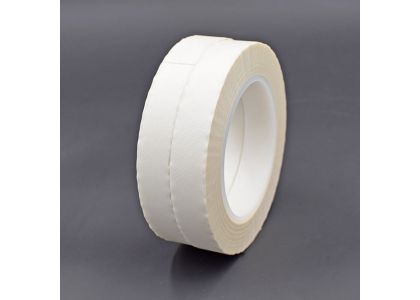
Glass cloth tape high temperature applications have gained considerable attention due to their unique properties and effectiveness in insulation and bonding. These tapes are widely used in industries requiring durable and high-performance materials for thermal management and protection. Among the various types of adhesives used in glass cloth insulation tape, rubber and acrylic are the most prevalent. Understanding the differences between these adhesives is essential for selecting the appropriate product for specific applications, especially in environments where elevated temperatures, reliability, and long-term performance are critical.
Glass cloth insulation tape adhesive properties play a decisive role in determining the tape's overall performance. Rubber adhesives are known for their strong initial tack, fast bonding speed, and superior ability to adhere to irregular surfaces. These characteristics make them ideal for rapid repairs, temporary fixes, and surfaces with texture or unevenness. However, rubber adhesives tend to degrade more quickly when subjected to continuous high heat. This thermal sensitivity may result in decreased adhesion over time, posing a challenge for applications in prolonged glass cloth tape high temperature environments.
In contrast, acrylic glass cloth tape adhesives provide excellent thermal stability and superior resistance to temperature extremes. Their ability to maintain adhesion under fluctuating or consistently high temperatures makes them well-suited for demanding industrial applications. Acrylic formulations are designed to endure aging, UV exposure, and chemical contact, thereby extending the tape’s service life. For applications that require long-term durability, such as motors, transformers, and high-voltage electrical systems, Quality Glass Cloth Insulation Tape with acrylic adhesive is a more reliable and stable solution over time.
Moisture resistance is another factor where acrylic adhesives outperform their rubber counterparts. Acrylic-based glass cloth insulation tape adhesive maintains its integrity even in high-humidity environments or when exposed to water over time, making it ideal for outdoor use or in areas with condensation risk. Rubber adhesives may initially bond well, but their performance deteriorates under moisture exposure, leading to failures in insulation or protective barriers. For end-users seeking glass cloth tape high temperature performance combined with dependable moisture resistance, acrylic adhesive options provide peace of mind.
Rubber adhesives offer some advantages in handling due to their quick stickiness and flexibility. They conform easily to different surfaces, speeding up the installation process and allowing for less precise placement. This makes them favorable for quick-fix scenarios or manual applications without specialized tools. However, for precise industrial setups or automated assembly lines, acrylic glass cloth tape requires more careful application but rewards users with better bonding strength and consistent performance across various substrates and conditions.
When dealing with electrical insulation applications, the adhesive's properties directly affect safety and efficiency. Glass cloth insulation tape adhesive made from acrylic is typically chosen for its resistance to electrical breakdown and its reliability under high voltage conditions. It provides stable insulation without compromising under heat or humidity. Rubber adhesives, although versatile, may not meet the stringent requirements of certain electrical applications, especially in environments involving fluctuating voltage, elevated heat, and airborne contaminants.
To summarize, glass cloth tape high temperature performance is heavily dependent on the adhesive formulation. Rubber adhesives excel in fast application, irregular surface bonding, and cost-effective solutions for less demanding conditions. However, for sustained performance in harsh environments—where temperature extremes, moisture, or chemical exposure are factors—acrylic glass cloth tape emerges as the superior choice. It offers the durability, environmental resistance, and consistent insulation properties required in many industrial use cases. For professionals seeking Quality Glass Cloth Insulation Tape, the decision to select acrylic adhesives can significantly influence product longevity and operational reliability.
For B2B buyers and technical professionals in the electrical and insulation sectors, understanding the functional difference between adhesive types is vital. Selecting the right glass cloth insulation tape adhesive allows for better thermal performance, moisture stability, and overall tape effectiveness in high-demand environments. Although glass cloth tape high temperature functionality can be achieved through both rubber and acrylic types, the long-term reliability of acrylic makes it more suited to advanced insulation and heat protection needs. As innovations continue, users can expect even higher-performing acrylic glass cloth tape products, reinforcing the importance of informed adhesive selection in sourcing Quality Glass Cloth Insulation Tape for high-performance applications.